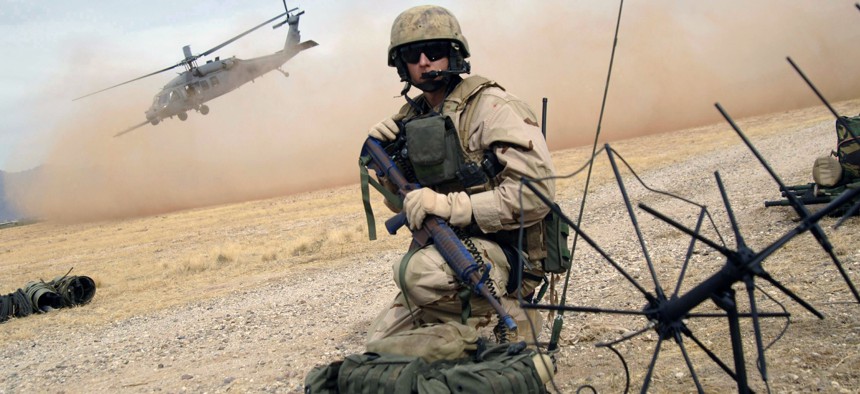The Army’s new medical data link connects medevac helicopters and hospitals
MEDHUB uses a system of wireless sensors to transmit real-time patient data to better prepare hospitals to treat them once they arrive.
Currently, Army medics face a choice when treating medevac patients: do they let down their protective guard over a patient to communicate with the receiving hospital who might end up saving that patient’s life, or do they continue treatment and hope the hospital will have all the information it needs once they touch down on the ground?
The service’s new Medical Hands-free Ultra-Wideband Broadcast program, or MEDHUB, seeks to eliminate that thought process through an automated real-time transfer of data between medevac craft and receiving hospitals, while also giving medics additional tools to monitor patients in their care.
The program, which began in earnest last December, started with a constraint, “what data could you send with one text message and still save lives,” said Jay Wang, Army Transport Telemedicine Transport Product Manager.
The system developed by Wang and his team at U.S. Army Medical Material Agency includes six sets of color-coded, wireless sensors which sit aboard the medevac aircraft alongside a commercial tablet which hooks up to the vehicle’s existing satellite relay.
With these sensors, which replace a single vital signs monitor that must be moved around from patient to patient, medics can monitor all patients at one time on screen. The system also allows for more precise measurement of a patient’s weight, which is important in determining drug dosage.
Back at the hospital, doctors and medical staff are fed this information through a screen that allows them to monitor the patients as if they were aboard the medevac helicopter. In the past, they would have instead relied upon a radio operator and runner who would receive inbound messages from the medics, if they found time.
More likely, they would have wound up with limited, or nonexistent, information until the final moments before a helicopter landed and a call for the number of stretchers and or blood was made.
MEDHUB’s advantage doesn’t end with the return of the medics to the helicopter. The data soaked up by the sensors is accessible via the tablet for later record-keeping by the medics, a more reliable form of data than memory or marker scratches on the back of a hand.
Wang and his team at USAMMA are still determining the best way in which to tap into existing defense department communications networks so the platform’s advantages can be fully realized. But, MEDEVAC Mission Equipment Project Manager Lt. Col. Christian Cook says, the technology itself has been positively received by users. Moving forward, the team is looking at ways to include more expansive telemedicine capabilities such as televideo consultation into the system, particularly for longer missions which could become a more frequent reality on the future battlefield.




